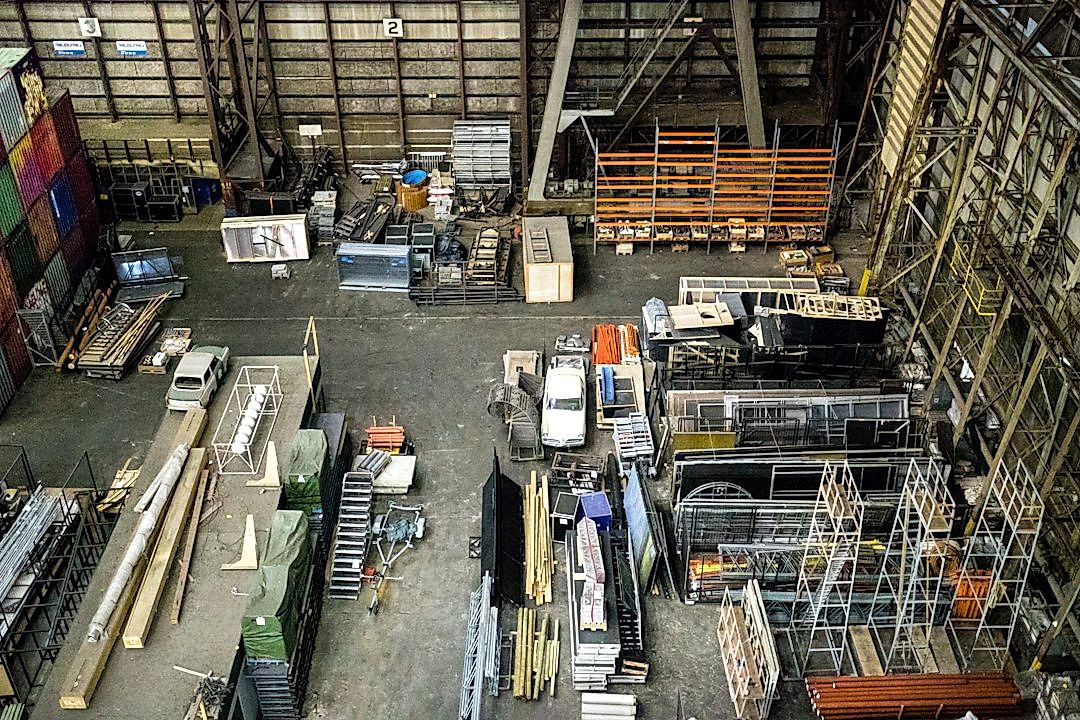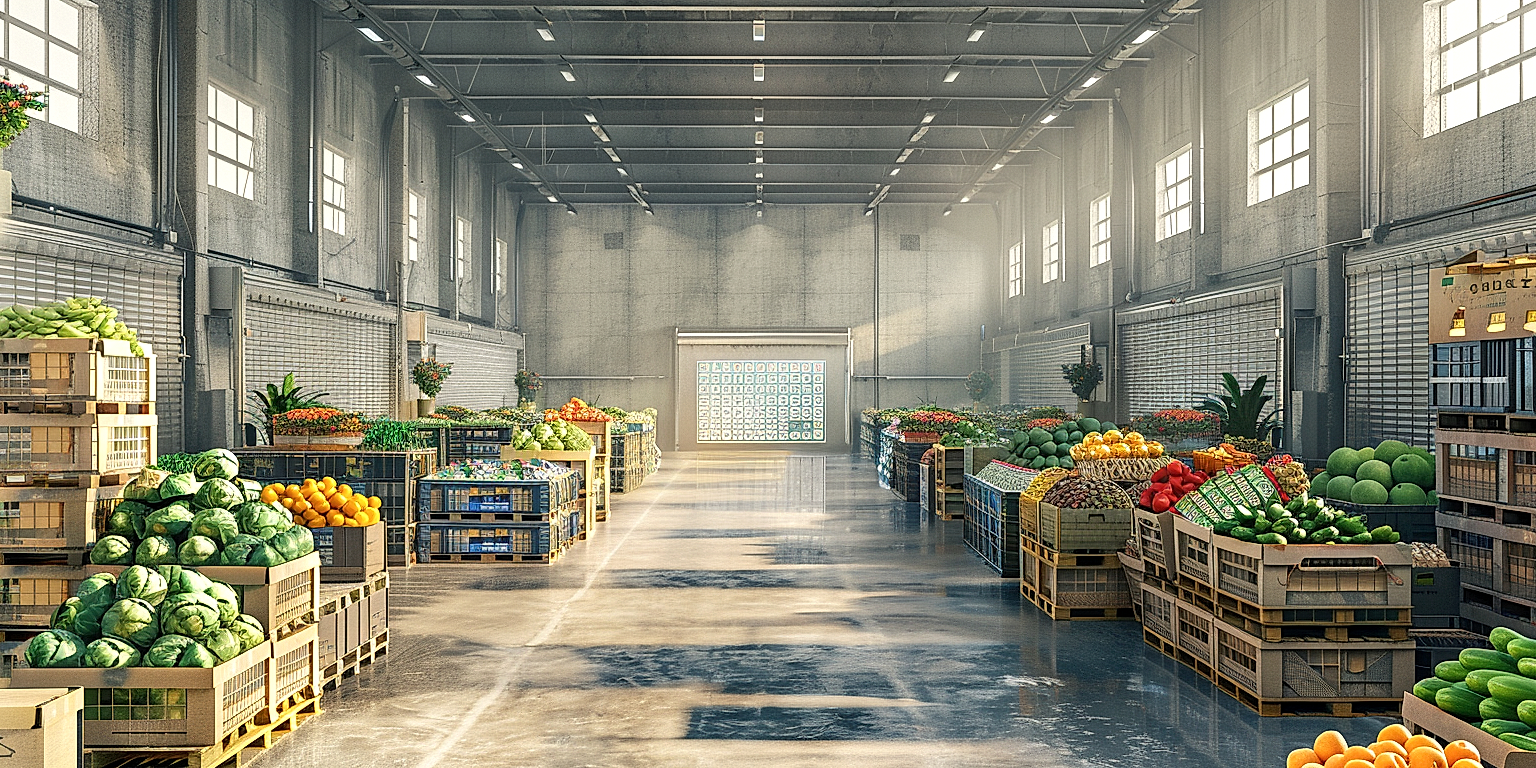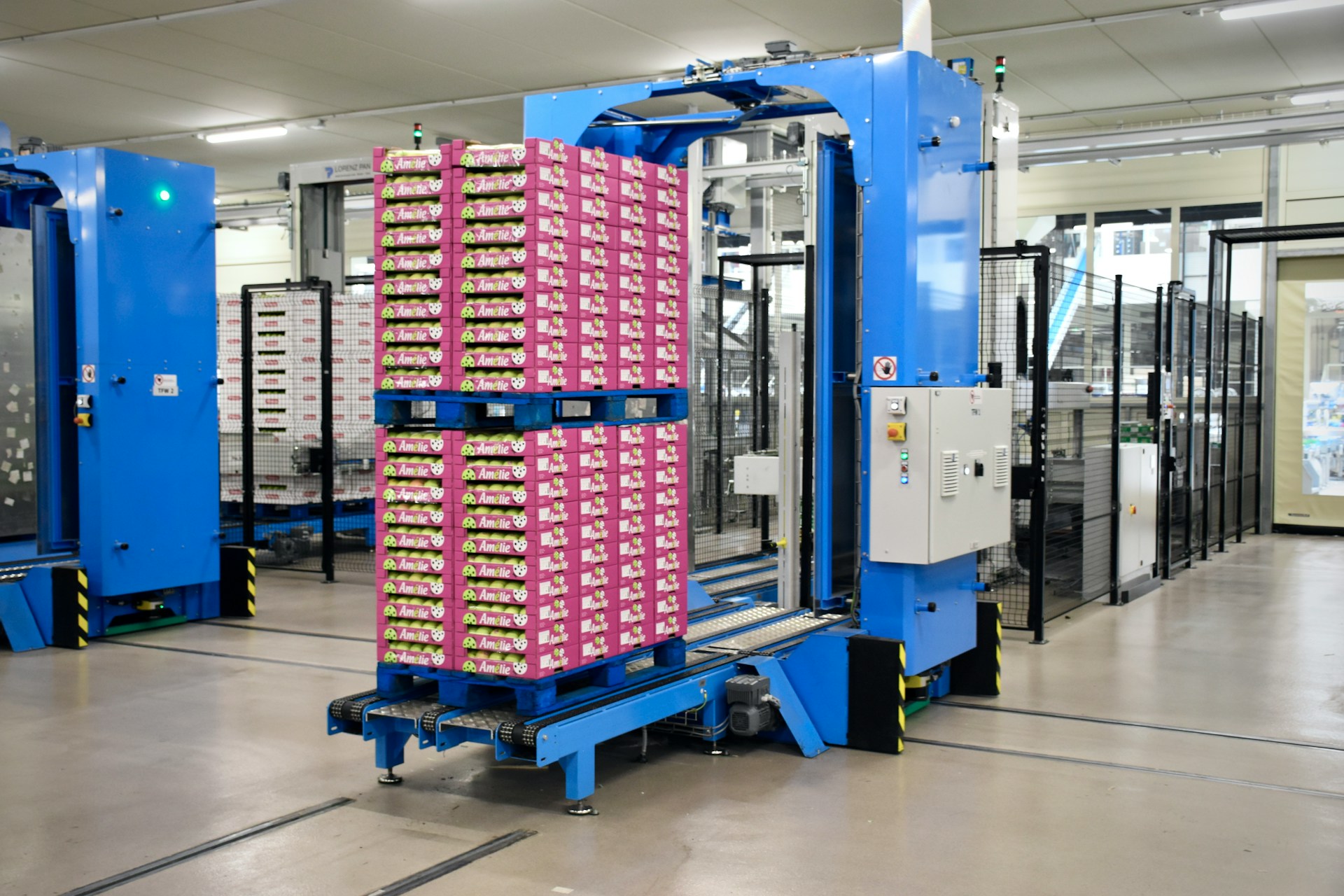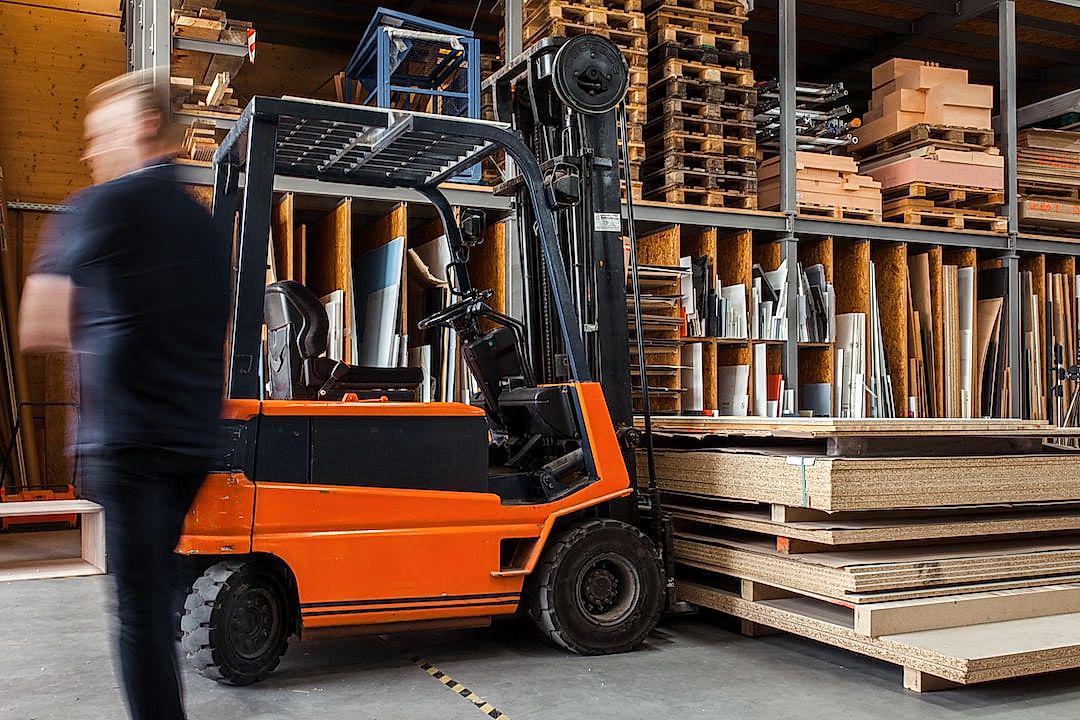Ensuring the longevity and efficiency of warehouse operations while minimizing environmental impact is no small feat.
For businesses involved in produce distribution, implementing sustainable practices becomes even more imperative.
From energy consumption, waste management, to supply chain design, several factors need consideration.
These practices not only helps firms reduce their carbon footprint but also promotes cost-saving and enhances brand image.
This article will delve into the various strategies and technologies that can be employed to transform your produce warehouse into an environmentally friendly, sustainable entity.
With examples from industry leaders and the latest research, we will explore how to envisage and execute sustainable warehousing practices for produce distribution.
Sustainable Warehousing Practices For Produce Distribution
1. Implement Energy-Efficient Lighting Systems
When it comes to sustainable warehousing practices for produce distribution, the implementation of energy-efficient lighting systems is a core component.
Focusing on this aspect not only yields significant cost savings but also caters to the need for environmental responsibility in the current age.
It’s important to understand what energy-efficient lighting systems entail.
These are lighting technologies that consume less electricity than traditional lighting systems while providing the same output.
Examples of such technologies include LED (Light Emitting Diodes) and CFL (Compact Fluorescent Lamps).
LEDs, for instance, consume up to 90% less power than incandescent bulbs, granting significant savings on power costs.
Similarly, CFLs use roughly 70% less energy than traditional bulbs, another compelling motive for their adoption in sustainable warehousing.
However, making the transition towards energy-efficient lighting systems isn’t just about changing the bulb.
One needs to look at other elements of the lighting system as well, such as fixtures, controls, and design.
Proper layout and design can leverage natural light sources, reducing the need for artificial lights during the day.
Your warehouse’s physical infrastructure might require changes to accommodate these setups.
Light controls, such as sensors and timers, are also important, ensuring that lights are only used when necessary.
Adopting advanced fixtures that direct light more efficiently can further optimize the system, preventing wastage.
A comprehensive approach to lighting, when combined with efficient technologies like LEDs or CFLs, forms the basis of an energy-efficient lighting system.
It’s essential to remember that implementing this system is not a one-time effort but an ongoing commitment.
Consistently monitoring consumption patterns and making the necessary adjustments ensures that the system continually operates at its peak efficiency.
Implementing energy-efficient lighting systems hence involves many intricacies but promises significant benefits for those in produce distribution, providing a sustainable way to light up warehouses while minimizing environmental impact.
2. Utilize Solar Power for Warehouse Operations
One of the most efficient and effective ways to implement sustainable practices in produce distribution warehouses is to utilize solar power for warehouse operations.
Transitioning to solar energy can significantly reduce the environmental footprint of a warehouse while also reducing energy costs.
The process of installing solar panels on the roofs of warehouses can yield significant amounts of power, especially if the warehouses are located in areas with large amounts of sunlight.
The utilization of solar power in warehouses not only benefits the environment, but it also creates a substantial cut in energy costs.
This form of renewable energy can be used to power lighting, heating, refrigeration, and even the operation of electric forklifts.
Moreover, warehouses implementing solar energy systems often find a return on their investment within a few years due to the decreased energy costs.
Solar power is a scalable solution, meaning it can be expanded or reduced based on the needs of the warehouse.
Businesses can also apply for green incentives or tax credits when they choose to go solar, further offsetting the cost of installation.
One significant benefit is that solar power provides a consistent and reliable source of energy, ensuring that warehouse operations are not disrupted.
Also, warehouses with excess solar power can feed it back into the grid, offering a possible additional revenue stream.
It is critical to remember that solar power does not produce emissions, maintaining the quality of air inside and outside of the warehouse.
However, the initial investment can be high, and sufficient space is required for the installation of solar panels.
Choosing to utilize solar power for warehouse operations is a significant decision for businesses due to the financial commitment and requires careful planning and consideration.
It is essential to work with knowledgeable professionals in the field to ensure that the system is designed and installed effectively.
Overall, the move towards solar power in warehouses represents a crucial step towards achieving sustainability in produce distribution.
3. Use Biodegradable Packing Materials
Adopting more sustainable practices can begin with a shift to biodegradable packing materials in the operations of a warehouse focusing on produce distribution.
A large percentage of environmental waste comes from non-biodegradable packaging materials.
Biodegradable packing materials, on the other hand, are designed to decompose over time which greatly reduces the amount of waste accruing in landfills.
Utilizing biodegradable packing materials not only helps to curtail environmental damage, but also demonstrates a commitment to responsible, green operational practices.
Biodegradable packing materials come in a variety of forms that can easily accommodate any type of produce product.
For instance, cornstarch packaging is a popular biodegradable option as it can be molded into a variety of shapes and is completely compostable.
Another viable option is mushroom packaging which is made from mycelium, a naturally occurring fungus, and agricultural waste.
This type of packaging is fully biodegradable and produces no harmful waste.
Recycled cardboard and paper are also excellent options for sustainable packaging.
These materials are not only easily accessible but also allow for a high degree of customization, creating a branded packaging opportunity.
Shifting to biodegradable packing materials may involve some initial investment, but it’s one that will pay off in terms of environmental savings and potential customer appreciation.
Consumers are growing increasingly aware of the environmental impact of their purchasing habits, and demonstrating a commitment to sustainable practices can make a significant difference in a customer’s choice to support a business.
Many businesses also find that they are eligible for tax breaks for taking steps to reduce their environmental impact.
Using biodegradable packing materials is thus an operationally and financially responsible choice that can offer both immediate and long-term benefits.
In addition to the environmental and economic benefits, the shift to biodegradable packing materials can also help to improve the overall image and viability of a company in today’s competitive market.
Ultimately, integrating the use of biodegradable packing into a warehouse’s operation is a crucial step towards achieving sustainable production and distribution.
4. Integrate waste recycling schemes.
As a critical part of sustainable warehousing practices, implementing waste recycling schemes has manifold benefits.
Not only do these systems reduce the environmental impact of warehouse operations, they often lead to cost savings in the long run.
Waste materials, if not handled judiciously, can lead to pollution and unnecessary landfilling, a harmful practice for the environment.
Designing and implementing a waste recycling program can help turn these waste materials into valuable resources instead.
An effective recycling scheme begins with an audit of the waste that the warehouse generates.
This initial assessment allows for the identification of the types and volumes of waste, offering potential diversion opportunities from landfill.
Next, management can work with local recycling facilities to determine what materials can be recycled and to establish recycling procedures that align with facility capabilities.
In many cases, warehouses may have to separate waste into different streams to facilitate recycling, such as paper, plastic, or metal.
This may require employee training to ensure all staff are aware of proper sorting techniques and recycling practices.
Moreover, warehouses can also explore upcycling or repurposing initiatives for materials that might not traditionally be recyclable.
In this scenario, waste materials are transformed into new, more valuable products reducing the dependency on raw resources and energy.
For instance, wooden pallets can be refurbished and used to create furniture or other warehouse fixtures, creating a closed-loop system that maximizes resource utilization.
Ultimately, integrating waste recycling schemes within warehouses plays a fundamental role in advancing sustainability measures and contributing to the wider goal of a circular economy.
By adopting these practices, warehousing facilities can consolidate their position as responsible corporate citizens, committed to reducing their environmental impact and improving resource efficiency.
Through this, businesses can also cultivate a positive image amongst consumers and the broader community, which are increasingly recognizing and rewarding such efforts in the marketplace.
5. Practice Efficient Water Management
To ensure sustainable warehousing practices for produce distribution, a key aspect is to practice efficient water management.
Water is a critical resource in any operation, but its management has often been overlooked in warehouses.
Water efficiency should be placed at the forefront of every sustainable warehouse strategy to ensure responsible consumption and conservation of water resources.
Designing and implementing a robust water management system is a step in the right direction towards achieving more sustainable warehousing operations.
This involves steps like monitoring water usage, identifying leakages and excess use, adopting water-efficient equipment and technologies, and recycling and reusing water where possible.
The first step, monitoring water usage, can be achieved by installing smart meters to measure the amount of water used in different warehouse activities.
This helps in pinpointing areas where water consumption is high, thereby allowing for indispensable corrective actions.
The use of water-efficient equipment and technologies not only reduces water wastage but also saves money in the long run.
For instance, in cleaning operations, high-pressure, low-volume water systems can significantly cut down water usage.
Water recycling and reuse is another integral element.
This could involve systems for collecting rainwater for use in irrigation, or greywater recycling systems that treat and reuse water from sinks, showers and washing machines for flushing toilets or cleaning.
In addition, water-efficient practices should also extend to warehouse personnel.
They should be trained to understand the importance of water conservationand how their actions can contribute to it.
For this to become ingrained into the workplace culture, management must recognize and reward water-saving habits and ideas.
In the end, efficient water management in warehouses is not just beneficial for the environment, but it also makes business sense because it can lead to significant cost savings.
From a sustainability standpoint, water management is an area where many warehouses can significantly improve their practices to become more eco-friendly.
By placing a strong emphasis on water management, warehouses can better align themselves with the wider global objective of sustainable resource consumption.
6. Adopt Green Refrigeration Technology.
One of the ways in which warehousing operations can become more environmentally friendly is through the adoption of green refrigeration technology.
Traditionally, commercial refrigeration systems are significant sources of greenhouse emissions due to the use of harmful refrigerants like hydrofluorocarbons (HFCs).
However, newer, green technologies utilize more environmentally friendly alternatives for refrigerants, such as ammonia or carbon dioxide.
Green refrigeration systems also operate more efficiently, using less energy overall, which reduces their carbon footprint even further.
These systems also tend to last longer than traditional refrigeration units, reducing the need for replacements and the resulting waste.
Additionally, advancements in insulation technology help to maintain temperature stability within the warehouse, reducing the need for constantly running the refrigeration system.
Investing in green refrigeration technology also offers long-term cost benefits, as they require less energy to run and require less maintenance.
This is particularly important in the context of a produce distribution warehouse, where keeping products at a consistent, cool temperature is crucial to prevent spoilage and maintain quality.
Moreover, implementing green refrigeration technology aligns with a company’s corporate social responsibility and can improve its reputation among consumers, who are becoming increasingly concerned about environmental issues.
Various companies offer sustainable refrigeration units and professionals who can advise on the best systems to meet the specific needs of a warehouse.
Before making the transition, warehouse managers should work with energy auditors to correctly size and optimize their refrigeration systems.
Additionally, companies implementing green refrigeration technology may be eligible for grants or other incentives offered by governments or environmental bodies.
While the initial capital outlay for such a system may be higher than for a traditional refrigeration system, the long-term savings in energy costs and maintenance make the investment worthwhile.
Furthermore, as regulations around refrigerants and energy efficiency become stricter, adopting green refrigeration technology can put a company ahead of the curve and ready for the future.
Therefore, in the pursuit of more sustainable warehousing practices for produce distribution, transitioning to green refrigeration technology should be a key strategy.
7. Maximise Space Through Effective Warehouse Design
In the context of sustainable warehousing practices for produce distribution, maximising space through effective warehouse design is of prime importance.
By optimizing warehouse space, businesses can store more products and reduce the need for additional warehousing facilities, thus cutting down on environmental impact.
Efficient use of space also minimises the need for unnecessary movement and transportation within the facility, leading to reduced greenhouse gas emissions.
Highlighting the importance of optimising space, less need for movement inside the warehouse directly results in energy-saving while also improving worker productivity.
Moreover, an effectively designed warehouse makes the best use of natural lighting as much as possible, thus reducing energy consumption for artificial lighting.
It’s worth noting that a well-designed warehouse can make it easier to implement green technologies such as solar panels or energy-efficient lighting systems.
Also, the floor layout of a warehouse should encourage waste recycling by setting aside specific areas for waste collection and recycling.
This optimisation extends to water management too, as an efficient warehouse design incorporates systems for saving and reusing water wherever possible.
One smart strategy to make most of the warehouse space is to prioritise stock based on demand, thus reducing overstocking and resulting wastage.
An automated inventory management system can greatly aid in this by offering real-time insights into product demand trends.
Not only does efficient warehouse design reduce the warehouse’s environmental footprint, but it also boosts its operational efficiency by speeding up order fulfilment processes and reducing error rates.
Another key aspect of sustainable warehouse design lies in adopting green refrigeration technologies for the storage of perishable produce.
For instance, using natural refrigerants in place of HFCs can go a long way in curbing the greenhouse effect and the business’s carbon emissions.
In essence, the goal of sustainable warehouse design is to seamlessly integrate environmental stewardiness with business efficiency.
Given the growing consumer demand for environmentally-friendly practices, adopting a sustainable warehouse design strategy can also strengthen a brand’s green credentials, thus appealing to a wide audience base.
The Bottom Line
Adopting more sustainable practices in warehouse operations is not only beneficial for the environment, but can also lead to significant cost savings in the long run.
By integrating energy-efficient lighting systems, solar power, and green refrigeration technology, we significantly reduce our carbon footprint and slash our energy costs.
The use of biodegradable packing materials and the incorporation of waste recycling schemes demonstrate our commitment to reducing waste, while efficient water management techniques help conserve a vital resource.
The strategic and green redesign of warehouses to maximise space also adds another layer of efficiency to operations.
True sustainability is achievable and the way forward for businesses committed to balancing profitability and environmental responsibility.




